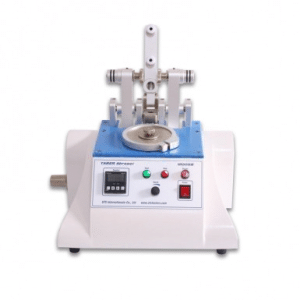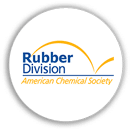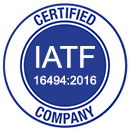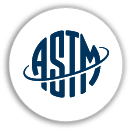ASTM D5963 Standard Test Method for Rubber Property—Abrasion Resistance
ASTM D5963 is a standard method used to evaluate the abrasion resistance of rubber materials. This test simulates the wear and tear rubber products experience during use, providing critical insights into their durability and suitability for various applications.
Industries such as automotive, construction, footwear, and industrial manufacturing rely on ASTM D5963 to ensure their rubber components can withstand repeated mechanical wear under real-world conditions.
Scope of ASTM D5963
ASTM D5963 applies to:
- Materials Covered: Natural and synthetic rubbers, elastomers.
- Products Tested: Tires, industrial belts, footwear soles, seals, and gaskets.
- Testing Conditions: Controlled abrasion under specific loads and surfaces.
This standard ensures consistent evaluation of abrasion resistance across a wide range of rubber products.
Purpose of ASTM D5963
The primary purpose of ASTM D5963 is to:
- Measure Abrasion Resistance: Assess the ability of rubber materials to withstand wear from friction.
- Ensure Product Longevity: Help manufacturers identify materials that can endure prolonged use.
- Support Material Development: Provide data to enhance rubber formulations for improved durability.
Key Concepts in ASTM D5963
- Abrasion Resistance: The ability of a material to resist wear caused by friction or rubbing.
- Wear Index: A numerical value representing the material’s resistance to abrasion.
- Volume Loss: The amount of material removed during the test, measured in cubic millimeters.
Test Methods in ASTM D5963
ASTM D5963 includes two methods for testing abrasion resistance:
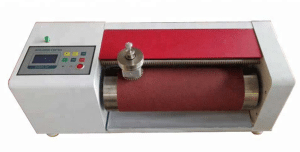
- Method A (Rotary Drum Abrader):
- Method B (DIN Abrader):
- Follows a similar principle but uses different equipment and parameters.
- Commonly used for international comparisons.
The choice of method depends on the testing requirements and the desired outcomes.
Equipment Used in ASTM D5963
Testing requires specialized equipment, including:
- Rotary Drum Abrader: The primary machine for Method A testing.
- Specimen Holders: Securely hold the rubber samples in place during testing.
- Measurement Devices: Calipers or precision scales to measure weight and volume loss.
Regular calibration of equipment is critical to ensure accurate results.
Test Procedure for ASTM D5963
The ASTM D5963 test involves these steps:
- Sample Preparation:
- Cut rubber specimens to the specified size and shape.
- Condition samples to ensure uniformity.
- Testing with Abrader:
- Mount the specimen on the rotary drum or DIN abrader.
- Apply a specified load while the drum rotates at a controlled speed.
- Measuring Wear and Volume Loss:
- Measure the weight or volume of material lost during the test.
- Calculate the abrasion resistance index based on the results.
Parameters Evaluated in ASTM D5963
- Abrasion Resistance Index: A ratio that compares the material’s wear performance to a reference standard.
- Weight Loss: The difference in the sample’s weight before and after testing.
- Volume Loss: The cubic millimeters of material removed during the test.
Factors Influencing Test Results
Several factors can affect the outcomes of ASTM D5963 tests:
- Rubber Composition: Formulations with fillers or additives can exhibit varying wear resistance.
- Abrasive Surface: The type and condition of the abrasive material used in the test can impact results.
- Test Conditions: Load, speed, and environmental conditions must be precisely controlled.
Applications of ASTM D5963
ASTM D5963 is widely used in:
- Tires: Ensuring tread materials can endure prolonged road contact.
- Industrial Belts: Testing wear resistance in conveyor systems.
- Footwear Soles: Evaluating durability for outdoor and athletic shoes.
- Sealing Materials: Assessing performance in abrasive environments.
Comparison with Other Standards
ASTM D5963 complements other standards, such as:
- ISO 4649: A similar international standard for abrasion resistance testing.
- ASTM D2632: Evaluates rebound resilience, which correlates with abrasion performance.
These standards provide comprehensive insights into material durability.
Common Challenges and Solutions
- Ensuring Consistent Test Conditions:
- Solution: Maintain precise control over load, speed, and abrasive surfaces.
- Accurate Measurements:
- Solution: Use calibrated scales and volumetric measurement tools.
- Calibrating Equipment:
- Solution: Regularly calibrate testing machines to avoid deviations.
Case Studies Using ASTM D5963
- Footwear Industry:
- Tested abrasion resistance of soles for high-performance hiking boots.
- Result: Identified materials with 20% higher durability.
- Automotive Tires:
- Evaluated tread compounds for improved wear resistance.
- Result: Extended tire lifespan by optimizing rubber formulation.

